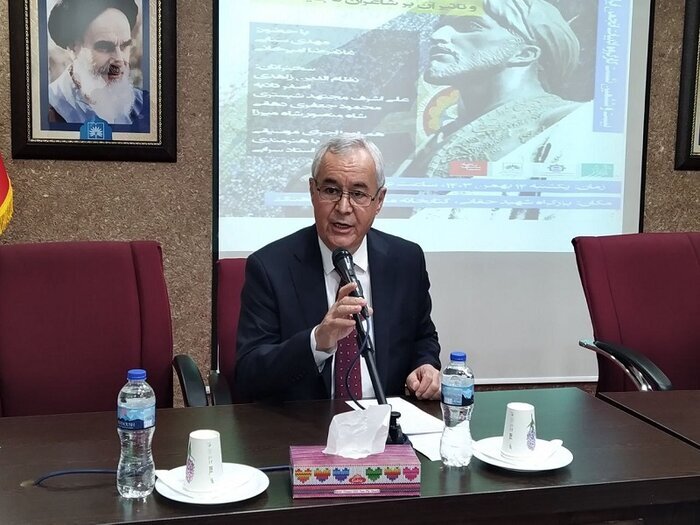Literary heritage of Rudaki reviewed by scholars in Tehran

TEHRAN-Rudaki was not the first Persian-speaking poet; however, as he demonstrated the power of Persian as a poetic language after two centuries of Arabic dominance, he is considered the founder of New Persian poetry, Nizamuddin Zahedi, Tajikistan’s ambassador to Iran said at the Literary Heritage of Rudaki session, which was held at the National Library of Iran in Tehran on Sunday.
The session was organized by the Association for Iranian Studies and the Institute for Iran-Eurasia Studies (IRAS), IRNA reported.
“During the Tahirid and Saffarid periods, there were poets composing poetry in Persian. Before Rudaki, in the realm of the Caliphate, of which Iran was a part, the language of literature and culture was Arabic. But what Rudaki did paved the way for poets in later centuries as they followed his path,” Zahedi added.
The Tajik ambassador added that one of Rudaki’s distinguishing features was his mastery of various poetic forms, including qasida, qit'a, ghazal, mathnawi, and rubai. “He skillfully employed different meters and literary embellishments”.
Discussing the revival of Persian identity during the Islamic period, Zahedi stated: “In the first and second centuries A.H., Middle Iranian languages such as Pahlavi, Khwarezmian, Sogdian, and Bactrian gradually lost their speakers and faded into history. During this time, Iranian scholars and scribes of the second and third centuries, more than 40 individuals, became masters of Arabic prose and poetry. In their writings, they incorporated Iranian pre-Islamic traditions and customs, ensuring their continuity through the Arabic language”.
“Another group of Iranians, led by Abdullah ibn al-Muqaffa, directly translated ancient Iranian literature into Arabic prose. Additionally, some Iranian poets rendered classical Iranian literary works into Arabic verse,” he continued.
“Thus, the second and third centuries A.H. can be regarded as the period of the Iranian intellectual uprising in the Arabic language. However, the second stage of the Persian revival began during the Samanid era in the fourth century A.H., to which Rudaki belonged. During this period, Persian literature revived Persian identity through the national language of Iranians—Persian and Tajik,” Zahedi emphasized.
Also speaking at the session, Mahmoud Jafari-Dehghi, president of the Association for Iranian Studies, highlighted Rudaki’s contributions to Persian poetry, including the invention of the rubai (quatrain), his attention to epics and myths, and the evolution of the Khorasani style.
Another speaker at the event was Asghar Dadbeh, a professor of philosophy and mystical literature. “The magnificent chain of Iranian culture continued after the Arab invasion and was not broken. Even in the first and second centuries, texts were written in Pahlavi. Therefore, Rudaki, who flourished in the third century, had access to the knowledge of the two preceding centuries,” he said.
Discussing the consequences of Rudaki’s efforts to revive Persian culture and literature, Dadbeh noted: “The reactionary faction affiliated with Baghdad persecuted Rudaki for his patriotism and Iranian nationalism, to the extent that he lost his eyesight”.
Other speakers at the conference included Mehdi Sanaei, president of the IRAS Institute; Ali Ashraf Mojtahed Shabestari, Iran’s first ambassador to Tajikistan; and Shah Mansur Shah-Mirza, a Tajik researcher and poet.
Rudaki (858-940/41) was a poet, singer, and musician who is regarded as the first major poet to write in New Persian. A court poet under the Samanids, he reportedly composed more than 180,000 verses, yet only a small portion of his work has survived, most notably parts of his versification of the Kalila wa-Dimna, a collection of Indian fables.
In Iran, Rudaki is acknowledged as the founder of New Persian poetry and in Tajikistan as the father of Tajik literature.
Photo: Tajikistan’s ambassador to Iran Nizamuddin Zahedi speaks at the Literary Heritage of Rudaki session in Tehran on February 2, 2025.
SS/
Leave a Comment